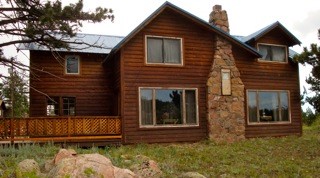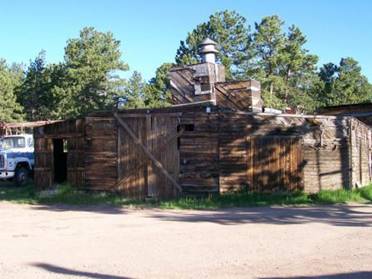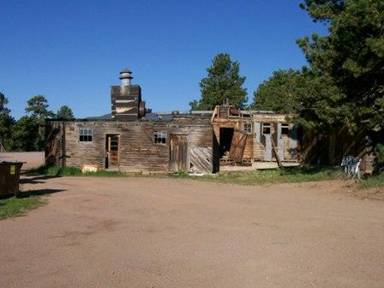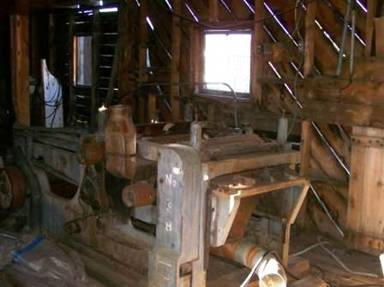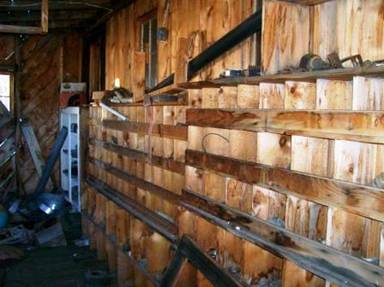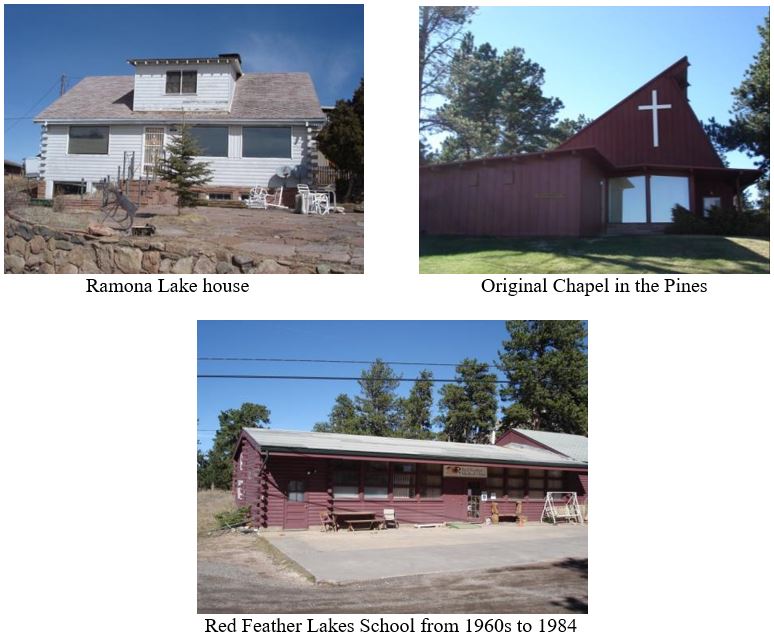Gene Barker Interview
August 8 and 29, 2010
At his cabin in Red Feather Lakes, Colorado
Interview and transcription by Linda Bell
[Interview available as PDF file]
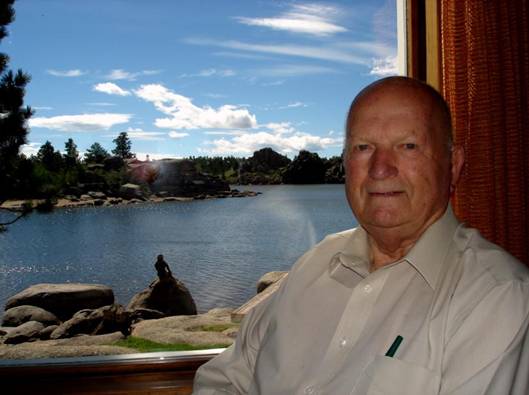
Table of Contents:
- From Iowa though Idaho to Red Feather Lakes
- A Family’s Own Range War
- Boyhood Memories
- War and Post-war Years
- A Life, a Business, and a Home Based in Red Feather Lakes
- Rabbit Creek Diamond Mine Project
- Not the “Retiring” Kind”
- Photos of the Mill
- Historic Photos of Gene Barker
- Gene and Pat Barker’s former home and construction headquarters in Red Feather Lakes (1950-1980), now Ponderosa Realty
- A tour through Red Feather Lakes with Gene Barker, August 29, 2010
From Iowa through Idaho to Red Feather Lakes, Colorado
I’ve lived in Red Feather since 1935 and I like to say that Red Feather was 11 years old when I moved here, and so was I. We moved on to the Wagner Ranch south of Red Feather. The road off the Deadman Road that goes to the center of Red Feather Lakes was just a little trail at that time and I used to ride my horse up the trail from the ranch to get the mail at the center of Red Feather.
In fact, it was one of the times I got shot at, I guess. I was going up through there and all of a sudden I heard a bang up in the woods, and zoom, a bullet went by my head somehow or other. I kicked the old horse and we left those premises pretty quick. I have no idea who fired that shot. Why or anything – target practice or just scaring me or what. But it scared me to death.
I was born in Iowa, my people were from Iowa. I was born November 20, 1924, in Des Moines. My dad worked for the State of Iowa and when Roosevelt was elected on that big Democratic landslide, my dad was let go from the political job he had – he was a scale tester type of guy. We lived there for a while and he tried this and that and nothing was working very well. My folks decided to start over again, so they moved to the panhandle of Idaho, just south of Bonner’s Ferry, Idaho. Just three of us moved from Iowa.
My parents bought a place up there. My dad learned how to use a broad-ax because he hewed ties for the Spokane International Railroad that ran through there. We wanted a house of our own, so my dad hewed the floor joists, the rafters, the logs, everything to make that house. A good neighbor had a little bell-sawmill and they used it to get the boards to sheet up the floor and roof. That’s how we got our home in Idaho.
While we were living in Idaho, all of a sudden we heard from my grandfather, Leroy West on my mother’s side. He had bought the Wagner Ranch here in the Pine Valley. He got in touch with my folks and asked them if they would like to come and run it and become part-owners of it. They made a deal and they each would have so many cattle, and so on. That’s how we ended up here.
But my folks got into a big rhubarb with (Leroy West), and that was one of the few range wars we ever had up here in Larimer county and in Red Feather. My grandfather and my folks got into a squabble about how they were going to split the hay crop. My grandfather went and hired Ben Scott who had the ranch down below our ranch, where the two little lakes are now. He hired them to go put up the hay from our ranch. The division fence goes between the two ranches and is still there. My mother, Melba, went downtown to see a lawyer to see what she could do about it, and she went to see Francer Sarchet, who was one of the leading attorneys in Fort Collins at the time. He told her they couldn’t get a court order on a Friday to do anything until the weekend was over. She said, “Well, they’ll have all that hay up by then.” And he told her, “Well, you’ll just have to stop them.”
There was a family up here who had eight or nine kids in it – all boys, the Boss children. They lived up there on that high rock pile just south of Ramona, between there and Red Feather Lake. Half of them were working for Ben Scott and the other half was working for my dad and mother. My folks decided they would just go down there with guns and crew and just hold them from coming over the division fence, which they did. There’s a little rock pile on the east side there, and a rock pile on the west side, which was our side, and our people all lined up there with shotguns and rifles, and his people lined up on the other side below the line with Bosses, Barkers and Scotts all there. When the time came time to start haying, they came out – and Ben came out in the open first by himself, because they knew something was going on – so he walked over to the fence and my dad walked down and they met each other, and they had a talk. They reconciled the fact that there would be no hay put up that weekend. And years later, Ben said, “I didn’t mind going down and seeing R.V.” – what they called my dad, his name was R. V. Barker – “but I was scared to death of Melba up there in the woods. I thought she might shoot me.”
In the meanwhile, here I was back at the ranch, and everybody was down there. Here I am, just a kid, up at the ranch, and my eyes are wide open because I don’t know what’s happened – all these people leaving, with all these guns and so on. I was afraid they’d come around and make a back-end attack. I was glad when that day was over! I was probably about 13 at the time, plus or minus.
To this very day, if you drive down the (Red Feather Lakes) road, the West Lake School was on the north-south line between those ranches, it comes out close to where Ponderosa Realty is now (across the highway). West Lake School, where I rode horseback to school, was on the south side of the road on the east side of the fence. If you look on down that fence, you’ll see the old stacker still setting there. They put the stacker on one side of the fence, so they’d bring the hay up and push it up and pile it on the other side. That’s how they got it from one property to another. That old stacker sits there to this day.
One of the pictures I have was the ranch house I was brought up in. My dad was R. V. Barker, Rollin Valentine Barker, and my mother was Melba. She used “West Barker,” her maiden name, as her middle name. My grandfather West owned the 12-mile Store on the Brighton Highway out of Denver for years.
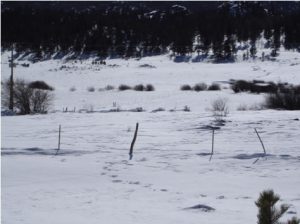
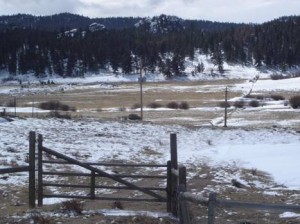
I rode an old buckskin horse we called Fox to school every morning. We had a little hay in the barn and I kept him in the barn all day and then I rode him home at night. I always said that horse was smarter than I was because I don’t know how many kids he’d taken down there in his lifetime, but he knew the way, and on a bad day, you just pulled your stocking cap down over your head and kicked him in the flank, and when he stopped, he was at the barn door at home.
I’d have to think of who my school teachers were. I remember the two women who ran the telephone exchange – Alice Gleason and Dorothy Scott, in fact she was Ben Scott’s estranged wife. The school went one through eight (grades). There were the Wickershams. Their father was the caretaker of Parvin Lake. And the Boss family children, and there was a Foster there, not Fred Foster, but one of his sisters, and myself – I’m an only child. That’s the reason I’m so perfect … and so bad, I might add.
In terms of our living conditions, we had Coleman lanterns in the house, which used white gas, and a kerosene Aladdin Lamp – those type of things. After a while we bought a “farm light plant” from Montgomery Ward. That’s how we got our electricity. It was a 32-volt type of thing instead of the 110 you get now. With that, we had lights and could run a radio and things like that. Our house was also piped for gas, so we could also have gas lights – carbide they called it. We hooked that up just briefly though and there was some little problem with it, so we decided – my parents – decided it was just too risky to take a chance on. That’s when we started getting the other things, like the light plant.
I used to have the upstairs of our ranch house as a bedroom. We had a pipeless furnace so it was warm up there. When the REA came in (in 1950), it was a panacea for the whole area and quite an improvement for Red Feather. It not only quote, “put us back on the map,” but it just made it possible for people to come up here and have water and services and that sort of thing.
I can’t tell you who originally built the Barker Ranch house – I don’t know – it was a log house. I know who owned it before we did, but I don’t think they (Wagners) built it, I think it was there prior to that. There wasn’t much of a history back then…. My mother sold that place. I wanted it in the worse way, but I couldn’t afford it. So she sold it to the Roths. They’re the ones who put the addition on to the north side. They called her K.G. because that’s what her initials were – and she was the heiress to the Curtis Publishing Company, she had a lot of money to do what they liked to do. That new part of the house was added on to the original part. They hired me as a contractor to put the addition on.
We milked cows there on the ranch. I pointed out that old separator to you; I got the job of running the separator because my mother sold, or my folks, sold cream. We had a half a dozen cows that we milked and I got my stint in on learning how to milk cows. Anyway, I used to run the old separator and we had cold water coming in from the spring into some big old concrete tubs that were there to cool the milk, old laundry tubs, we sold milk by the gallon there. People would come down with a jug and we’d dip out milk and fill their jug. I think it was 25 cents a gallon. Then one time, we decided we’d expand that a little bit. As a kid, I didn’t have anything to do so I ran a little milk route around Red Feather with a horse and buggy and sold it to people around the lakes. I sold milk to Ray Stenzel up there on the hill in the blue cabin, and all the way around Hiawatha. I had a regular route here. That lasted for a while.
When I was a kid I liked to trap and fish, and just run around Red Feather. There was a young bunch of kids around. Once in a while we’d go ring the church bell, crawl up on the roof and ring it Saturday night. One of the kids, Hugh (Bud) Drake, became a big patent attorney.
I broke my wrist just about the time I was going to go to high school. I didn’t think I was going to get to go, and all of a sudden my folks found a way to get me boarded out down in Fort Collins. I went down and boarded, and I boarded out until about my junior year, then I started taking care of myself very well. I got a job and I rented a room downtown, and did this, that and the other…. I kind of grew up on the loose side of Fort Collins in 1941, `42. You know, when you’re a kid you have a wild time. I never got thrown in jail!
My folks told me, “If you get thrown in jail, that’s where you’re going to be because we can’t afford to get you out.” The same with driving – “we don’t have any insurance, don’t have a wreck.” That impressed me and I understood it, so I was pretty careful. I had a souped-up old `36 Ford coupe with a type of rumble seat and a fast motor in it. I never got a ticket either. Anyhow that’s how I went through high school.
I made doughnuts to get through school. The family where I was boarding would wake me up at midnight and I’d try to go to bed at four o’clock in the afternoon, which is tough for a high school kid to do. Then I’d work the doughnuts until it was time to go to school. I was the only kid in Fort Collins High School that smelled like a doughnut consistently. The family where I was boarding, the Strongs, made the doughnuts…. My dad paid my room and board when I first started to school by going out into the woods and getting wood. The old boy, Strong, who run the stage up (to Red Feather) would bring up milk, bread, and all the perishables from town up to the stores and then he’d take a load of wood down and sell it. That’s how my dad paid for my board until I got a job. One of the Strong boys was the one who run the doughnut shop.
I came back up to Red Feather on the weekends, unless I was working on something, and I’d help my dad.
My dad ran all the water up here, that’s how I learned all about the water. We’d take shovels and go shovel the snow out of the intake ditches. We were the only ones that had a telephone because the ditch company needed to get a hold of us when the water priorities come in. Since he needed to work on the ranch, when a call would come in to move or shut off water, I got on a horse and took care of the water because I was the one that was running the water around. In fact I still run the water in Red Feather today.
There were always a couple of stores up here – the two present ones, Hilltop, used to be Wallace’s, and the one down below, used to be Hastings’, then Ted Dunning’s. Now it is the Trading Post. Over by West Lake, where the other one is, that happened much later. There was a restaurant-café – but my mother wouldn’t allow me to go into it because they served liquor. Ted Dunning had a real estate thing, and that was about it. Later, I had my construction and materials business. Then pretty soon, just one thing after another happened. All of a sudden the one they called High Country come along and they built that little nine-hole golf course and put in a water system in around there, and cabins. Now that’s the Red Feather Road House. When you’re in Red Feather you kind of learn to cope with what’s here. (Recently) they were talking up there at the Pot Belly – they have to pay insurance, and do everything that everyone else has to do down in Fort Collins and so on, and they don’t see customers like they see in Fort Collins, so things get a little tough. They don’t have to complain to me because I’ve been there, done that, so I know how tough it is to make ends meet.
During the war I was based at Camp Lejeune, North Carolina, Fort Monroe, Virginia, and I was at Jacksonville, Florida. I was teaching radar and when they decided they had enough radar people, they put me in aviation electronics and I went to Jacksonville Air Station for more training and then San Diego, ocean-side, at Camp Pendleton.
I want to put it on record; I was the only person that went into (military) service from Red Feather. There are a lot of people who say they are veterans from Red Feather, well, they’re veterans, but I was the only one from Red Feather. I went into the Marine Corps for three years, `42, `43, `44. I like to think I was half-way smart, and so they put me in an electronics thing and I taught for quite a while. They liked what I did, so they put me through what was the equivalent of a college engineering course, in electrical engineering. I knew a lot about radar. In fact, I thought that’s what I would probably do when I got out of the service … that’s when it was coming into (passenger) airlines and so on, and I thought I’d become an expert in that type of thing, but life led me down different paths.
After my Marine Corps discharge I needed some money so I started carpentering. When I went to high school I took wood shop, metal shop, mechanical drawing, English and mathematics. I was fairly good with construction type things and so I did some construction in California. I had a chance to get in the movies out in Hollywood because I run with that kind of a crowd when I was out there and that’s a saga all to itself.
My folks had split up during World War II. I was here in the States, but not here, (in Red Feather). My dad was living … oh I don’t know … he wasn’t living high on the hog back then. I can’t tell you just where, but he was living here around Red Feather somewhere. He finally ended up marrying a gal by the name of Mildred Delavay that run the restaurant and little bar, the Red Feather Café that burned down. Before that, he stayed up and ran the sawmill at the Black Mountain Ranch. He made the first milled house logs in Colorado that I know of. Directly west of Crystal’s headquarters is where the Black Mountain Ranch was – it had a big ranch house that was built out of logs that were shipped out of Michigan or Wisconsin. A guy by the name of Dr. Mall built it, and he stocked that thing up. It was one of the finest stocked ranches that anybody ever saw, because every time he operated on, for example, a plumber, he’d take plumbing stuff in as payment for his bills, and every time he operated on someone else, it was some other supply. He had everything in the world there, and he had a sawmill there. The worse thing doctors can do is to buy a table saw or a sawmill, because he fell into the sawmill and cut himself in two. He went to jerk a piece of slab out of there, and, there he was! There have been two guys in this country up here killed that way. The other one was over at the Elkhorn. I can’t tell you his name right now. Just a quarter of a mile down the road from the Lady Moon, there’s a sawmill and a planing mill in there.
I don’t know who owned the Black Mountain next, but I know some people by the name of Floyd, who were rich wheat farmers from western Kansas, bought it. The Floyd family bought it because the father died, and all of a sudden there was a lot of money there, somewhere. They bought that thing to put Richard Floyd on it. Richard was an attorney and he had a little alcohol problem. My dad had a little alcohol problem. Richard married a woman who had a little alcohol problem, and they all lived up there together at that Black Mountain Ranch. Finally Floyd died and then my father and Marion were married, and that lasted for a while, I don’t know how long.
My mother stayed on the original ranch until she sold the ranch and then she moved to Colorado Springs. She stayed in Colorado Springs and had a great time down there. She married a plumber. He didn’t like the way something happened, and he walked up to her door and shot her, right through the chest. She managed to outlive that. She later married A. J. Beckstead after his wife died. He was an old friend that had the Pinecreek Ranch (later the Stuart Maxwell Ranch). She eventually … lived in one of the assisted living places in Fort Collins so family could peek in once in a while and visit.
(While I was still in California) my dad called and said this place is kind of going bonkers up here. A lot of people are coming in and wanting to build cabins. If you want to come back, I have a cabin here that needs to be built. So I packed up all my stuff in California and I built that little log cabin that sits on the corner of Ramona Lake, right behind the stores. Just before you leave sight of Ramona, there’s a log cabin right there. That was the first structure I built after I got back here.
But I got out here and I got so broke, I couldn’t go back to California and have my chance in the movies. One cabin led to another cabin and first thing you know, marriage moved into the thing, and all of a sudden I had a home and a business and that was it.
They had a building down on Dowdy Lake they called the DAV Hall that the WWI disabled veterans had built years ago. It wasn’t the swankiest building in the world, but it was a building that was good enough for a community get-together and they had a dance floor in there. The community finally got to have it, so they’d have potluck dinners there every so often and we’d have dances and square dances. There was no booze allowed in the hall but there wasn’t anything said about what could be in the cars. There was a lot of travel during a dance out to the cars. I got a lot of my education just being out there in the lot. This was after the war and I was back here living. People from Livermore and all over came – it was a “going-Jesse” place – dancing, round, square, anything. All the old timers, ranchers and people came out on Saturday night and they’d have a potluck dinner and then dance. Old Ben Scott played a banjo and someone played a piano, and I don’t know what else.
I wasn’t married then, not that I can remember, but shortly thereafter. A lot of young kids went too – they enjoyed that square-dancing. I met Pat Olson up here. Her parents were business people in Omaha and so they were all in the same clubs that business people are in, and they knew a guy by the name of Ralph Swanson. That’s the father of the Swansons that are on the ranch where I lived as a boy, where you exit Red Feather. He had a cabin up here and he invited my (future) mother-in-law to come stay in the summer, because she got too hot (staying in Omaha). She brought her kids so I started chasing…. That’s how I met my wife.
We were married in Omaha in 1950, and unbeknownst to anyone, we were married July of that year before we got married in September. A good friend of mine, Phil Peter, and his wife, Lynn, were the only other people who knew that we got married in Estes Park. People kind of wondered why she was sneaking in and out of my place in the middle of the night. We used to do a lot of wild things.
A Life, a Business, and a Home Based in Red Feather Lakes
It ended up that I was in the community here. Pat and I had our four kids here. I built where the Ponderosa is now and had a lumber mill and hardware and ready-mix there. I serviced the construction industry up here, including being a constructor myself. I built the log schoolhouse that’s on the east side of Red Feather, the one that’s the clinic now. When I did that, I bought the old Westlake schoolhouse. I had a big old bulldozer and I put some skids under the school house and I pulled that thing over the road and down over between Ramona and Snake Lake to a lot in the Ramona subdivision and it’s where the schoolhouse sits today. They call it the “little red schoolhouse” in there. A friend I went to high school with bought it, his name is Weldon Phipps. He uses it as a cabin.
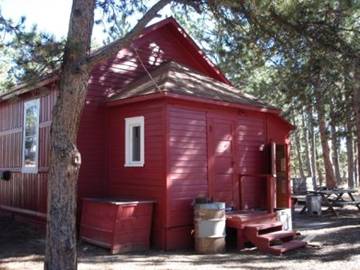
I used to own part of the Alpine Lodge – I and a friend of mine, Ray Higley, who lived across the lake from us. That was a big place. We had a bar there and a motel upstairs, and downstairs we could seat 150-200 people in that place. The Alpine was on Jimmy’s (O’ Rorke) cabins property. Some people by the name of Metzler got in and started the Alpine up, and there are a million stories with that too. We ended up buying it from Farmer’s Bank out in Yuma – it had been foreclosed. It finally burnt down. I still have a bad check for part of the insurance payment that was no good.
I used to own the “Rustic” on the Poudre, and that big fish sign that is there, I bought that and had it put up. Then I also owned the ranch from Rustic clear up past the Elkhorn on the Manhattan Road. The entrance to the ranch was down the road from the Goodell Homestead, about a quarter of a mile (up from) the substation at Goodell (Corner). On the right is the Robinson sawmill and just beyond that was the old fox farm which was on the Elkhorn Road, also called the Boy Scout Road. I remember the Robinson’s had a big conical pile of elk and deer horns in front of their place.
I bought the Rustic from Pink Davies. Friends of mine by the name of Hagaman wanted to run it. He was a cook and he run the place for a while, but it was one of those things. There wasn’t enough money being made and we kind of broke up. It wasn’t a particularly happy time. There were a jillion other things going on at Rustic. I won’t even mention that here. New owners came in and tore down that old landmark hotel. Teddy Roosevelt slept there, you know, and the place had original pictures and urns and murals. Since I am a collector I wish I would have saved some of those historic items for myself. I left them there because I thought they belonged there and all of a sudden they got stolen out of there. One of the things I’ve regretted that I didn’t hang on to.
I had a planing mill down where the Ponderosa Realty is now. I had quite an operation there – a planing mill and a lumber yard. I sold all kinds of lumber things, hardware, plumbing and electrical items, anything anyone wanted I got and had it there the next weekend, almost without fail – (just) once in a blue moon when it rained all week I couldn’t plane or something, or lumber would be too wet. But between that sawmill and stacking lumber there, I had quite an operation there. Then I ran a “ready-mix” (cement) out of there, earth moving, house building…. We also built Apache Lake up here. If you’re in the construction business, you better be doin’ something.
I bought the sand and gravel yard down where I am in Fort Collins and I had this business at Red Feather. I had two contracting outfits, I was building that diamond plant over by Prairie Divide, and I couldn’t handle all of it and the construction business in Fort Collins. I just couldn’t work enough to make up for what wasn’t being (done) properly in the others, so I started selling my properties off. Of course the ranch was the first thing that sold … I’d give anything to have it back. Then all of a sudden I made a deal with the people that have the old Rustic now. They bought it and had it, so I didn’t have that any more to worry about. And something else happened, and I quit sawmilling and I quit the planing mill and I quit doing a lot of things … life wasn’t worth all the trouble.
I’ve never taken a bullet but I’ll tell you what, I’ve looked down the barrel of a .357 magnum when a guy was talking to me.
There was a man up here by the name of Kagel that also had a sawmill up at the property just beyond where my quarry was (on the Deadman Road). Kagel had a deal with his mechanic that any time there was something broke down, the mechanic was supposed to go fix it. So they had broken down and everyone was idle on a Saturday, so Grover Kagel got the parts and put the word out to the guy that was supposed to do it, to do it. The guy was out rabbit-hunting and drinking and he was mad when he got the word, when someone located him. So he came in to Red Feather. It was kind of a bad day and we were all playing a little pocket pool or something on one of those little quarter tables they had at Steven’s Red Feather Café and it was my turn. All of a sudden, the mechanic comes in and he says “You all sit down over there.” We did. Someone said, “Gene, it’s your turn,” so I got up and that’s when the guy comes over to me and says, “I told you to sit down, and I meant it!” I said, “I understand; it just happened to be my turn….” He had his (gun up) in the air and then he was coming down when he wanted to make one of his points. I was about eight to ten inches away from the barrel of that gun, and it looked as big as a baseball looking down the barrel of that gun. I thought he was going to shoot me, but he didn’t, and I was glad…. So I went over and sat down by a friend of mine, Rittenhouse, right where there was a window, one of those old-fashioned small pane windows. I was going to dive through that if things got tough, but it wasn’t necessary. But the guy I sat down beside said after it was all over, “I could have killed you myself – why did you sit down beside me, I thought he might get me.” Anyway, things have happened in my life that I don’t want to happen again.
I spent a lot of time going over Deadman between here and the Laramie River because I built two big places over there. I built a place for Church Owen, an attorney out of Denver, who consorted with the likes of the Rockefellers, Sun Oil Company and other big entrepreneurs. Once a year for about a week, one of the group would entertain the rest of them. Prior to the year that it was Church’s turn, he had us build a fancy log home over there complete with maid’s quarters. That was a lot of money for one year’s entertainment, but that group of people didn’t think anything of it. That was on the Diamond Tail Ranch – 20 or 30 years ago or so.
I also built a new log house for the Wiegnals on the Laramie River about three miles north of the Diamond Tail Ranch. Those trips over Deadman late fall and early winter were hairy. Two different times I found people stranded on the road and took them to safety. They were stranded without gas and no one knew where they were. One guy started a fire in his car to keep warm. They were lucky I came along.
Just as an interesting thing, I had never seen an elk here by the time I was old enough to go into the Marine Corps. Up in the Deadman area, elk moved in during World War II or later. We just didn’t have them before that. Number one, they didn’t dare show up because he was in the pot, and number two, they just weren’t here for some reason. I just don’t know. But all of a sudden, after I come back, I started seeing them. It’s possible they were reintroduced.
But one of the amusing stories about the Laramie River is that one day I got a call from the sheriff in Laramie, Wyoming, and he said, “We’ve got a guy over here, Mike (Rattlesnake Jack’s son) Brinkhoff , and he said he knows you. We caught him on a stolen horse and we’ve got to put him in jail, but I can let him go if he can prove he has a job somewhere and gets out of Wyoming.” He lost his job and was walking to Laramie, saw this horse in a pasture and took it.
I said, “Why sure – I know Mike, he’s a good worker, I’ll vouch for him and hire him when he comes back.” We made our arrangements so that happened and everyone got the word. So Mike got out of it and he come back and we put him to work. That was about the time Fox Acres was starting up and I was just busier than a bumble bee, so I had Mike and another guy digging out a spring and getting ready to make a water system. It wasn’t the easiest work in the world, but anyhow, I went over to check how they were doing and they were just sittin’ there. I talked to them for a few minutes when I said, “Well, I suppose we better get back to work.” And Mike says, “Nope, we’re on strike.”And I said … “What?” He said, “I’m on strike.” He hadn’t been on the job a half a day, on this big deal I got for getting him out of jail. I’ll never forget that as long as I live. I’ve been hiring people all my life and we went through a lot of hired hands between here and Fort Collins, and it’s the first time anyone ever mentioned the word strike. And here it was, four hours, but we worked something out on the strike to get the job done. He’s still around. I haven’t seen him for a long time and we’re still good friends.
Brinkhoff wasn’t the only one who stole a horse. I stole a horse out of a pasture once myself. I was in my 30s and living up in Red Feather. There was a big snowstorm raging, but I needed to get to the bank that day, or so I thought. My car fell off the road near where the wildlife area is and I remembered a horse in a corral not far away. I had a rope with me and made a rope halter, but he wasn’t broke. Still, I made it into town on that horse. I got it fed and watered and called up the owner and told her what I’d done.
That was one of the times the county couldn’t get up the road without breaking their machinery in the deep snow. That happened in the snows of 1949 too, when it just keep blowing and snowing, blowing and snowing, all winter. Word came up to the village that winter that Freddie Boyle had measles and couldn’t work and they needed someone to help them. I went down and parked my truck at Pinetree Circle on the Beckstead Ranch then skied to Boyle’s house from there. I was put up in a room until he recovered and I did the chores like feeding the cattle and so forth. They had some kids, but they were still young.
Rabbit Creek Diamond Mine Project
I built the first diamond sorting plant in the Western Hemisphere. I got pretty well wrapped up in the diamond project. The first people we worked for were Superior Oil Company, which was an oil company that wasn’t a major company, like they have now, but it was still a big oil company. The guy that owned the company was interested in diamonds. Somehow or other, they got the word on the Sloan property, that there were diamonds up there. The road (CR 82E) going up into that country was just terrible – the worst kind, it didn’t have culverts or drainage.
Superior Oil engineers were driving by on College Avenue in Fort Collins and we were tearing down a church, where the Safeway is on Mulberry and College. We were tearing that building down, and it was a miserable rainy dreary day. But we were out there working. They decided, well if those guys work out here on a tough day maybe they’ll go up there and work on our project. So they contacted us. I went up there and looked, and they said, “We want to fix this road up.” I said, “Do you want to fix this road up or patch it up?” They said, “Fix it up.” And so I did. I went in there and I put culverts in that road and it’s like it is now.
They really liked that, so they said, “You can probably dig our test holes up here.” I said, “Sure.” So I started digging their test holes, and I went down and leveled a place where they could put samples and a building. “Can you build a building?” they asked. I said, “Yeah.” So I built a building. Before I could build a building, they had diamond sorting machinery coming in from Johannesburg, South Africa. They showed me a picture of the only other one – the first one was being used out in the Kalahari Desert in Southern Africa. I was supposed to go over there and look at it, but I decided I didn’t want to do that. I could find out what I needed to know by having a set of plans and looking at the pictures. I talked with an agent in London and he said, “Well, we haven’t got a payment on that yet – we don’t know whether we want to send you a set of plans up there or not.” I said, “I want to tell you something; my name is Barker and I’m an Englishman, and years ago you kicked our family outta there and we come over here, and we’ve done pretty well.” And I said, “You can believe it when I say you’ll get paid for those plans.” And the guy laughed on the other end of the phone and said, “I’ll send you a set.” He sent me a set of plans so I could put all the stuff under the floor (the water drainage and electrical systems) before I put the plant on top of the concrete floor. They sent the plant. It was shipped over by boat. Wow, I had never seen stuff like that. That’s where I kind of became a millwright. I built things and did things, and put that all together under one roof so you put the ore in one end and the tailings come out the other, and (then) you take the diamond concentrates to the lab for sorting.
The Superior Oil Company was so afraid people were going to spy on them that when I put windows on the north side of the diamond sorting room, I had to put them in at a bias, so you couldn’t see in there. They were afraid DeBeers or someone was going to sit on that hill and look down in there. The security was something fierce – they were on duty 24/7. They were stopping people going up and down the county road, for crying out loud. I finally said, “Hey – you cannot do that, that’s a legal road. If I was going up and down there and you were doing that, I would have the sheriff chasin’ after you.” They finally got to listening to what I was saying.
So first thing you know, I built them a building and a security fence and they found out I could put the plant up, and this, that and the other. The guy that they hired to run the plant worked for a minor partner, maybe a 25% partner, of one of the big mining companies up in Canada, but anyway, he was a drunk. He was an English guy, and he’d go and get tanked up. He lived in Fort Collins and he’d have to get up and come up early in the morning, and he just couldn’t be drinkin’ all night and do that. So they finally got mad about that and the sorting girls were complaining about it, so the big shot come in and says; “Gene, can you run this thing?” I said, “Well, who do you think is runnin’ it when he’s not here? I start it and I finish it.” I said, “You know, I built it.” He said, “OK.” So the guy was gone the next day.
That was in the 1980s. Superior Oil had a lot of money and one of the gals there that was a diamond sorter had worked down at Niko’s (Niko’s Catacombs) – down in the basement. So they got so they would go down there and Niko had all that world wine, and they spent money like it was going out of style. Anybody who showed up from anywhere in the world – and we had people from all over the world coming in there to look at this diamond plant – from Australia, from New Zealand, from Africa, Canada. They all went through the plant and then to Niko’s for dinner in the evenings. Old Niko made a lot of money off that.
I run that plant until it was shut down. They planted diamonds in the ore to see if we could find them and to see if we were honest. They were not there, but they knew each pile. They’d say, “Take pile 99 next time.” They planted diamonds several times, and I always turned them in. Once I was really excited about it because there was one hell of a fine diamond and they were really looking for something like that. I called them down in Tucson and I said, “Boy, you guys need to get up here because I’ve got something here you’ll want to see.” They poked around and finally come up a week later. I was all upset they hadn’t come and see my diamond, but they knew it – it was a plant.
I had to watch our help to make sure they weren’t looking for diamonds in the equipment, in some of the shakers (where) there could be some diamonds laying in some of the little pockets in there. I was getting paid to see that nobody took anything out, and I saw to it. I run a real good operation. I used to say I’d give you better than 99% fidelity. Nobody ever caught me or the plant losing one (diamond).
There’s a big diamond mine there in Perth, Australia. Those people had some property in British Columbia and they wanted to run through some samples to check for diamonds, so they sent a guy from Perth to look at this (Colorado) operation. He was a real expert – but when he left, he gave me good marks about our capabilities and they had us do their job; right now. We run that six, eight, ten years. Superior sold out to Mobil Oil – that’s where we got our special grease for the diamond sorting screen. They made it up special down in Africa. (Mobil Oil) finally sold out to Falconbridge, up in Canada, and Falconbridge had it for a while. Then they sold it to … Phipke, the guy who was a geologist that checked stream sediment samples. He checked samples and sent stuff (down) to us and then we’d run it there – his company is called Diamet.
Finally BHP bought it. Phipke was the guy that run Diamet. He had a hunch and went up and sampled stream sediment clear up above the Arctic Circle into a lake, and so he decided that’s where the pipe was. The material that the diamonds come in is what they call a pipe. It comes in like a volcano and then it quits, and when it quits, it shrinks back down in and forms a little sump on top, so they’re always looking for little lakes around because there might be diamondiferous ore in there. They used to fly helicopters up there in Canada in the wintertime. Boy, talk about spendin’ money, they spent it. Anyhow, Phipke followed the pipe up there and he drilled that pipe when it was 40 below zero, in the wintertime, and put the drilling cores into canvas bags that were about 4 by 4 by 4 feet high. Then he tied them off and froze them solid. Then they were hauled down to Edmonton until it started to be spring and then they picked them up and brought them down and laid them off at our place. When they thawed out, I called them and told them I was ready to run it, so they all come to the plant. Everybody came and it was a cloak and dagger thing; everybody knew there were diamonds in there. They were very cautious about who looked in there. They didn’t even want me looking in there. Phipke himself was up there checking how everything was comin’ out.
We saw pictures of what the truck drivers were going through – wolves standing up on the sides of the snowdrifts. The trucks crossed the McKenzie River when it had ice on it. They talked about trucks and caterpillars getting lost going down into the lakes up there – sinking. They wanted me to go up there and work; I didn’t want any part of that. That ended up as the biggest diamond mine in the northern hemisphere. That’s where the big diamonds are being found.
I found the first stones that were certified to the Rabbit Creek pipe, so it was worth going in there. The stones were close to the Sloan homestead. Finally … we had some machinery that Phipke used and we kept charging by the month for it and finally they decided, well, it would be cheaper if (they bought) it. They offered to buy it from us or give us some stock, and we chose to take the money. The stock was like about 55 cents – it went to $65 and we would have hundreds of shares of the stuff, but that … I don’t know whether that was the first time I missed being a millionaire, but it was one of the times. That was just a matter of bad decision. Who knew? Besides, it was Canadian money, 80 cents on the dollar.
When Barker Construction closed the plant, we reclamated the test pits and closed the entrance to the adit that was drilled in to the mineral site. The local people knew what we were doing and wrote us and the regulatory agencies about what a good job we had done. That was quite a kudo for us because they were worried about the looks of the site upon completion.
I don’t have any worries in the world; we’ve had some, but things are as they are and you have to face them and go ahead. You can get just as mad as you want, rave and throw things, but when you’re all done and you get through, you’re right back to square one. My life has been filled with a bunch of those things, and I’ve learned how to do that.
Here we are in this old house, and some of this house used to be located on the south side of the hill going east, south of Parvin, and it was called “Elliott Hill.” This man, Howard Kennedy, went down and tore down the old Elliott homestead that was south of the road. A lot of people don’t know it was there. It used to be called “Elliott Hill” but now they call it “Fish Hatchery Hill” or “Parvin Lake Hill.” That was the (source of the) original lumber that Howard Kennedy brought up to build his cabin here (on Lake Hiawatha). After that, his wife died, then he died, and (it was) sold. Some other people bought it and they built the mermaid out in front. They built it to look like that mermaid in Copenhagen. She was Scandinavian. Then the people – Ken and Dolly Nelson – fixed the rest of this up. I have done very little to it. I put in this picture window, and that’s the view.
When I was 12 or 13 years old, and when I came to know the Elliott’s, they were already well established on a ranch in the Livermore area. I believe the Elliott (Dan Elliott, father of John Elliott) that built this may have been part of that ancestry.
I bought this property because I just loved this place.
Janell and I were married on 7/7/07. We were married right there on that little path that comes down from our yard out there. We set up all the chairs up there, there’s a picture of that somewhere around here. I’d like to say this about my wife. I brought some girls up here after my wife died and we had a good time fooling around. I’d bring them here and they’d look around and say, “Oh this is beautiful, what do you do?” Well, Hell – this is it, lady! And when I brought Janell up here, she said, “Oh this is beautiful – when are we coming back?” That sold me….
I like to think I’m not completely retired. I own several parcels up here at Beaver Meadows. They had that big auction sale up here at Beaver Meadows this year. It didn’t go worth a damn – it just did not go at all. It was a strange auction. When they took a bid, anyone could make another bid at another time, including you. They took everything that was dead and put it into a continuing total amount, so one person could go back and bid the whole thing. They continued taking bids way after all the properties were done. They didn’t get a bid on two of ours, ever – the two best lots never got a bid – and finally someone said, “Well, let’s put a little something on that one, because that would make it better over here,” and so someone bid something on ours, not because they wanted it, but because it made the totals look better. We didn’t sell anything. Don Weixelman, I think, sold one thing. I don’t think he was happy with that. I don’t know, I haven’t really talked to Don since. But I’ve listed my property with a realtor, Gary Weixelman. Gary has certainly been pleasant to work with, and helpful. I’m totally comfortable with him.
My wife noticed that The Forks was being auctioned. She would like to have a bed and breakfast or to do something and she said, “Let’s go buy that….” And I told her, “You just don’t know how many headaches you could have if you step your foot in that door!” I remember when it was “all you could eat” for $1.25; that old boy made money. He was full all the time. That was the old building. We used to go there from the diamond mine; we’d stop in there and have a beer on our way to town. They had a special target they put up on the wall. They would blindfold you and turn you around two or three times, give you a 22 caliber gun and say “see if you can hit that target.” Thank God it was a wall made of boards. The game warden lived right behind there. Someone said, “Well, what if it goes through one of those cracks and kills the game warden?” and they all just laughed. I was pretty careful about playin’ that game, but we used to have a good time in there.
The Red Feather Lakes Storage and Irrigation Company we have up here is an entity – a very necessary entity for Red Feather in terms of the recreational and fishing value here. All who are on the board are indebted to the old timers that put up the funds to buy our water rights years ago. We’re very careful about who we let in as stockholders. I hope we’ll continue that. Dennis Frydendall is going to go off the board soon, and you better believe we’ll be looking over our shoulder about who we elect. I feel like that is one of the charges I’ve gotten in my life, to protect the rights, 40 years ago probably, and that I’ve always maintained. I’m jealous of these rights we have here and I want to see them run properly. You never know for sure when someone will try and take over our water.
I already looked at the water levels this morning because we’re lowering this lake (Hiawatha) to put a new dam in it. I went down today because we have to get this lake down to where the present pipe is through now, so the contractor has a place to start. We’ve only got to go down a foot more, then we’ll be down. Then we plan on using the amount of water left in here to keep our fish going during the winter time. We may put an aerator in the lake so it won’t have an oxygen problem. We’ve had that problem in the past and the aerators do wonders. We used to have a fish kill in Shagwa Lake all the time, and we used to have one in Letitia, but since we got aerators, we don’t have that problem. They take care of the oxygen demand. If we have an open winter so the sun shines just right on the ice, that’s one way to keep the oxygen going, and if we have a winter with snow on the lake, we need the aerators. You never know how it’s going to affect the fish in the water. We’ve been fairly fortunate that the management we’ve done in the last 10 to 15 years hasn’t nearly had the winter kill we had before.
Photos taken June 2010 a few months before it was demolished.
Historic Photos of Gene Barker

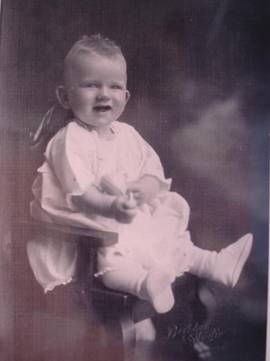
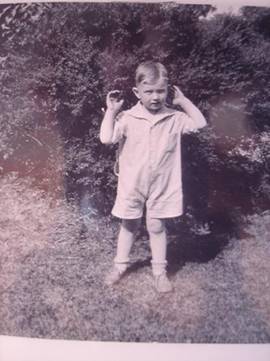
Starting life in Iowa…
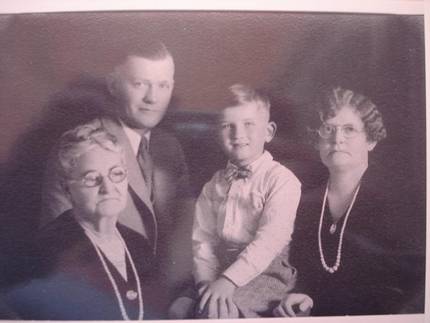

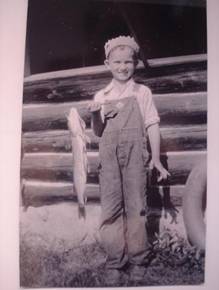
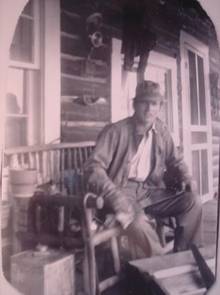

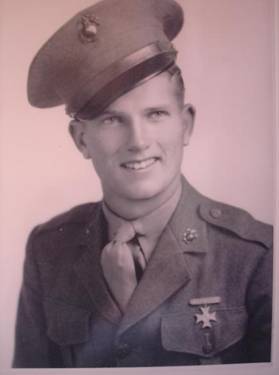
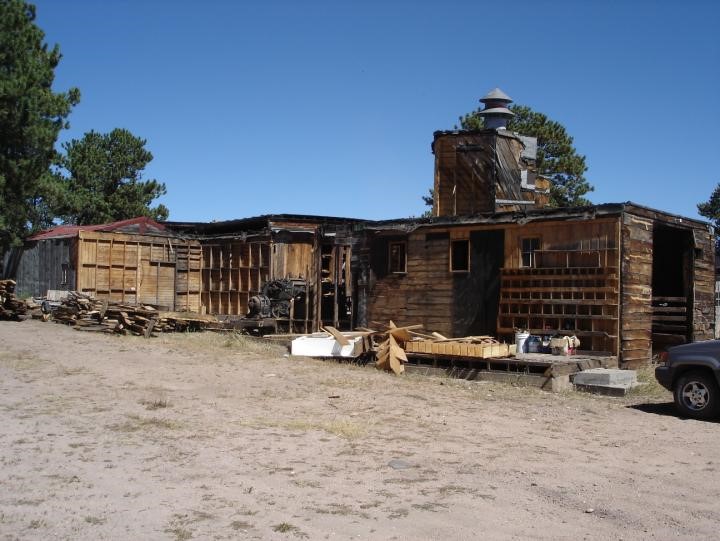
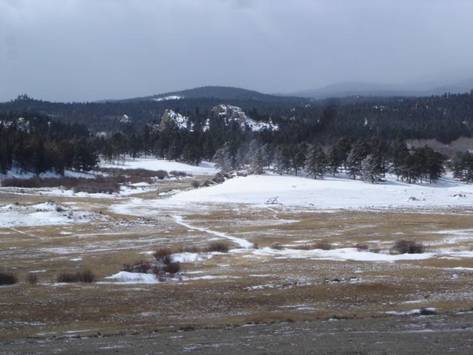
the old Ben Scott Ranch and R.V. and Melba Barker ranch lines
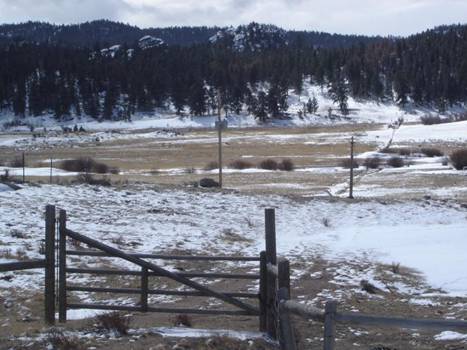

A tour through Red Feather Lakes with Gene Barker, August 29, 2010
Location of the old hotel from circa 1925, built on the crest of hill above the Mountain Crafts Gallery across from Hilltop Store
We’re heading toward the old hotel. Now the old hotel had a well that’s just right down below this hill and that’s where the water come up to furnish this hotel. The well house is still there. There’s been some road changes and all, but as I recall, it was right in the area, right here. As I recall, this was built on to the end of the old hotel. It was a lay preacher that built that on.
That’s where the well was. Back in the old days, you just took a jack hammer and dug the well. They didn’t have well drills. You can see the chunks around here. Last time I was through here that was in one piece.
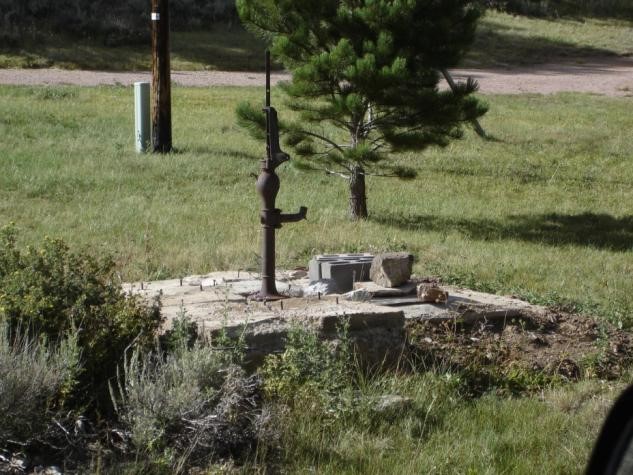
The hotel had drives coming up from around here two or three ways, and pathways. Now the businesses back here destroyed some of that stuff. This is part of the property. As I recall Jack and Jerry Dalton, who used to have a store up here, now called the Trading Post, they bought the whole hotel property. When Jack died, that was the end of my involvement. You can see where that level spot is up there. There’s bound to be little parts of foundations there somewhere.
This cabin was built in the late 1940s by the lay preacher who was caretaker for the hotel owners.
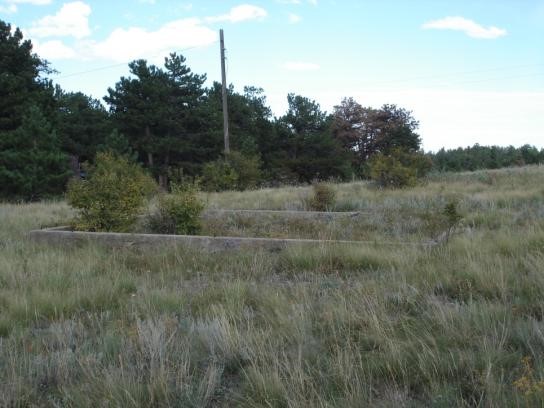
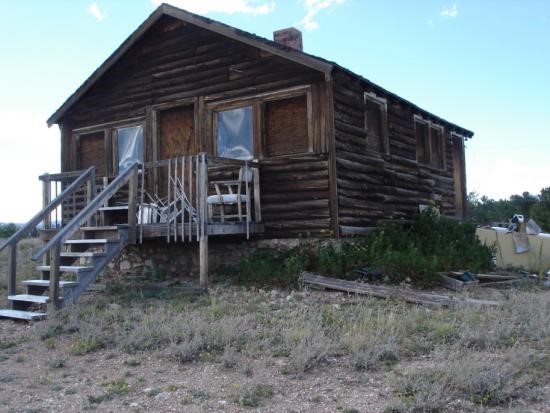
Around the Village…
That’s Jimmy O’Rorke’s place there.
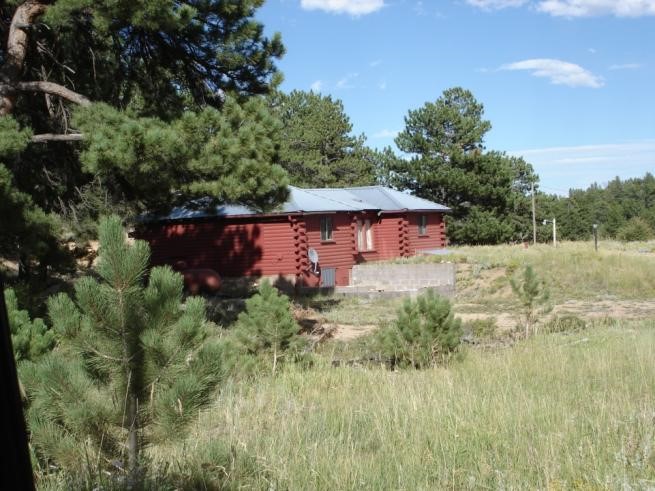
And there is Lou Young’s old place over there across the road, the grey house, but this is his old barn and stuff down in there.
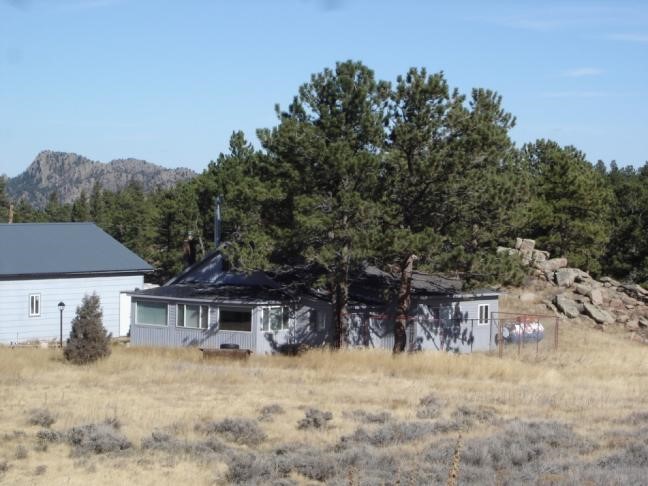
And there used to be a guy by the name of Sanky that had a sawmill and lived in the wood house just right down there – I think my mother married him. My mother had various relationships.
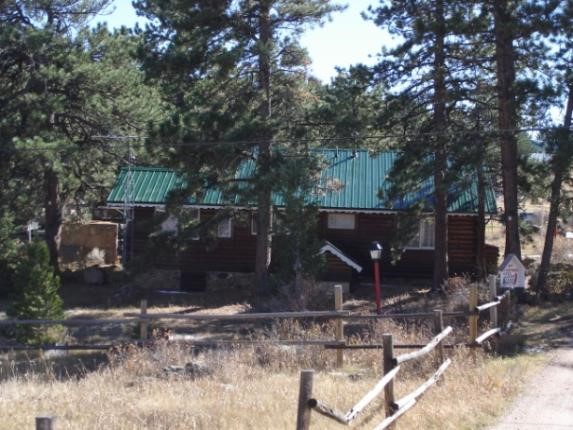
Around Ramona heading east, turn north on Minnehaha. Here’s Bonnie Drake’s old house. And this was Oscar Drake’s place down there.
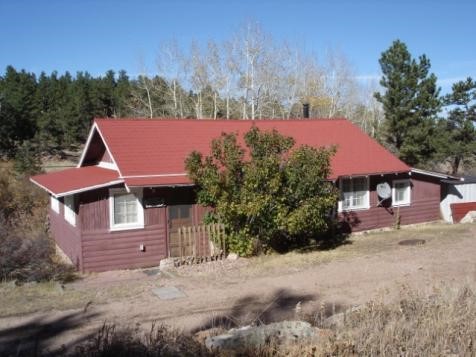
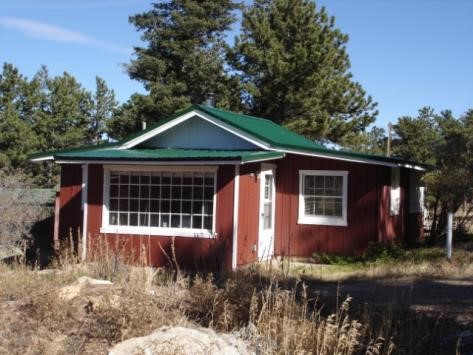
Old Westlake Schoolhouse [See more on Historic Local School Sites]
We’ll go in there and look at where the old Westlake Schoolhouse is now. Here is the old schoolhouse – this red one. Those are the original windows, those old-fashioned windows. I haven’t seen windows like that in years. In the back, there’s a little covered entry way. When I moved the school to its present site the entry way was behind, so that’s the way we left it. I sold it to a guy by the name of Phipps that I went to school with, and he used to call it the “little red schoolhouse.” He painted it red, it was white when it was a schoolhouse. Oh yeah, I went to that schoolhouse. I rode horseback to school every day. We used to have to go down to a spring everyday and collect water in cans. Then we put the full cans in the entryway out back to use during the day.
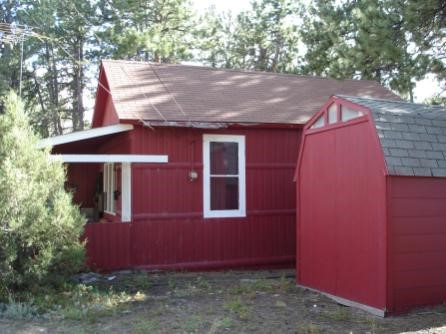
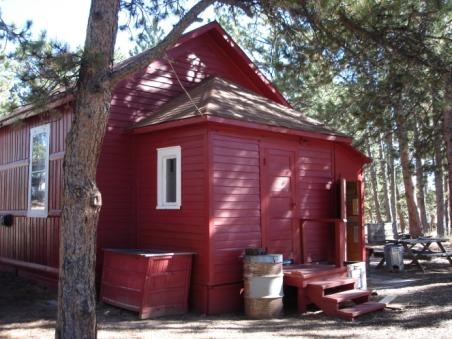
Years ago, when I was on the school board up here we built that new log school-house, Red Feather Lakes School, that the doctor has now. Then they sold the old Westlake schoolhouse. Well, I bought it and hooked a bulldozer on it with some skids under it and brought it up through Swanson’s pasture. It was on the Hardin Ranch. My first wife, Pat, wrote that deal about the Hardin Ranch, and the swans coming in there – white swans. My wife, when she was working on her master’s degree, wrote her whole dissertation on that whole thing down there. I believe my son Paul Barker has that dissertation.
Promotion materials for Redfeather (sic) Mountain Lakes Resort
It is interesting to see all the letters and sales brochures that they had here many years ago for the Redfeather Mountain Lakes Resort.
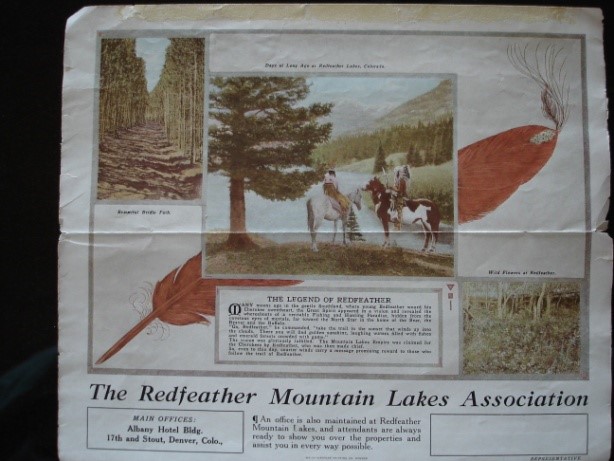
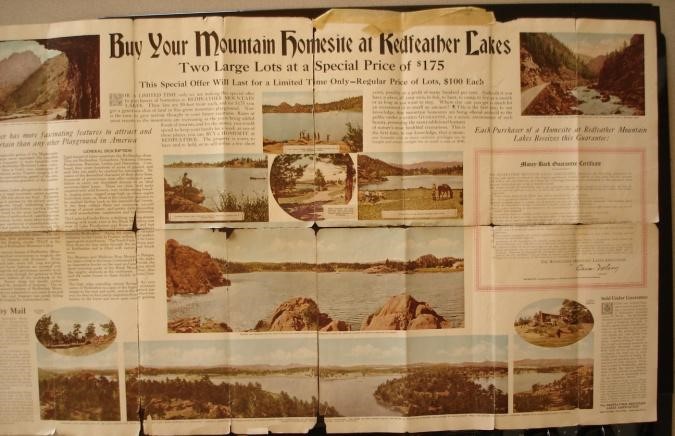
Red Feather Storage and Irrigation Raffle
I’m trying to find the house that was in that raffle for the RFS&I in 1950. I think I remember just where that cabin is that was raffled. I’m having trouble picking that out – it’s one of these cabins up here. This is it I think. Just by Bud Thomas’s.
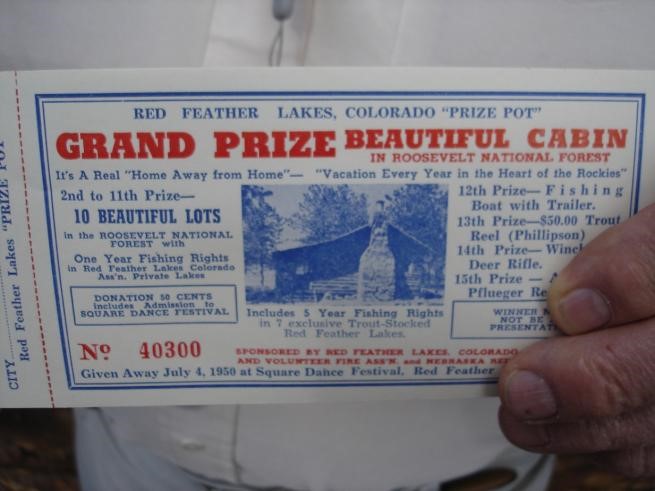
Let’s ask Bud…. Bud: “It’s right in back of me, but they’ve done a lot to it. They added two bedrooms to the back and a garage. They kept it all original but added on. The old fireplace in the picture is still inside. ”
Gene; “Do the same people still own it?” Bud; “Morris? Yes, it’s still in the same family.”
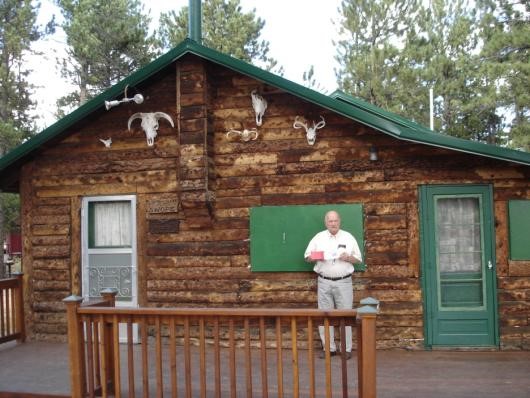
Right here on Ramona Drive is one of the old entrances to Red Feather, and the old church is across the road from there.
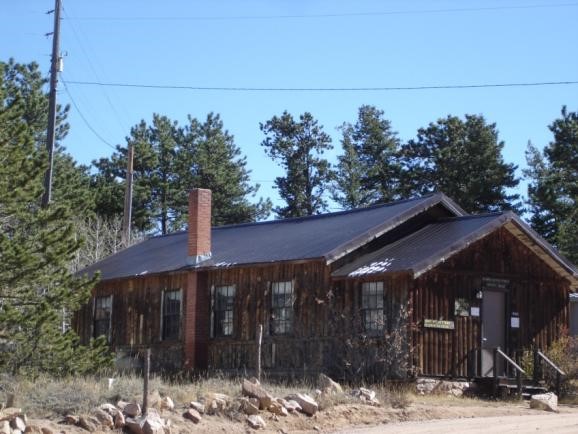
Oh I’ve built a jillion houses around here – I built that log schoolhouse and that log house over there, and Chapel in the Pines.
We used to make house logs here. My dad and I … my dad really … for a short time he made the first milled house logs in the State of Colorado. I started in the house log business later and shipped them everywhere, out to New York, and other places. If you know where Fort Morgan is … where you go past on that superhighway out there and it says “Log Lane Village,” I milled all those logs right down here where Lucille has the Ponderosa Realty now, that used to be our house where Pat and I raised our family in Red Feather Lakes.
This place right there – they rented that to ditch company, and this house here was a ditch company house. So the Fosters were in one of them. And I built the one down there along the road (Bee Be Lane).
The old Foster cabin is one of those there near Bee Be Lane.
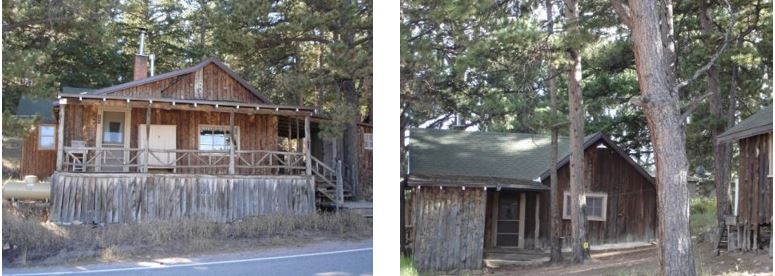
The family in the old (Jay) Worley house is Johnson who has a lot of …. I don’t know what his connections are, but his dad helped form that irrigation company, the one with the Grand Ditch in Rocky Mountain National Park (Water Supply & Storage Company) and he had a lot of stock in it, as I understand. We (Barker Construction) open the road up to Long Draw (Reservoir) every year and along the ditch. That road goes right up to the Continental Divide.
Red Feather Storage and Irrigation Company has water rights in that general area (near the Continental Divide) called Mountains and Plains. RFS&I uses this water for transferring to Red Feather Lakes. Dennis Frydendall and I figured out a way to get this water through various legal transfers.
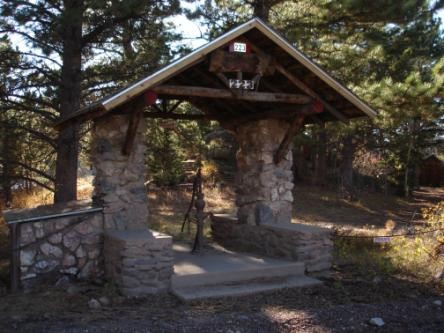
The Gooch house was originally built on the east side of Ramona Lake for a couple from Cheyenne, Wyoming. Very soon after it was completed it was sold to Ralph Gooch and torn down board by board by Ralph’s carpenter Bill Sievers and reconstructed on Haiwatha Highway. Ralph Gooch was a candy salesmen from Denver. He died in the 1950s. The house was sold to Ray Higley lock, stock and barrel, and included many antiques.
